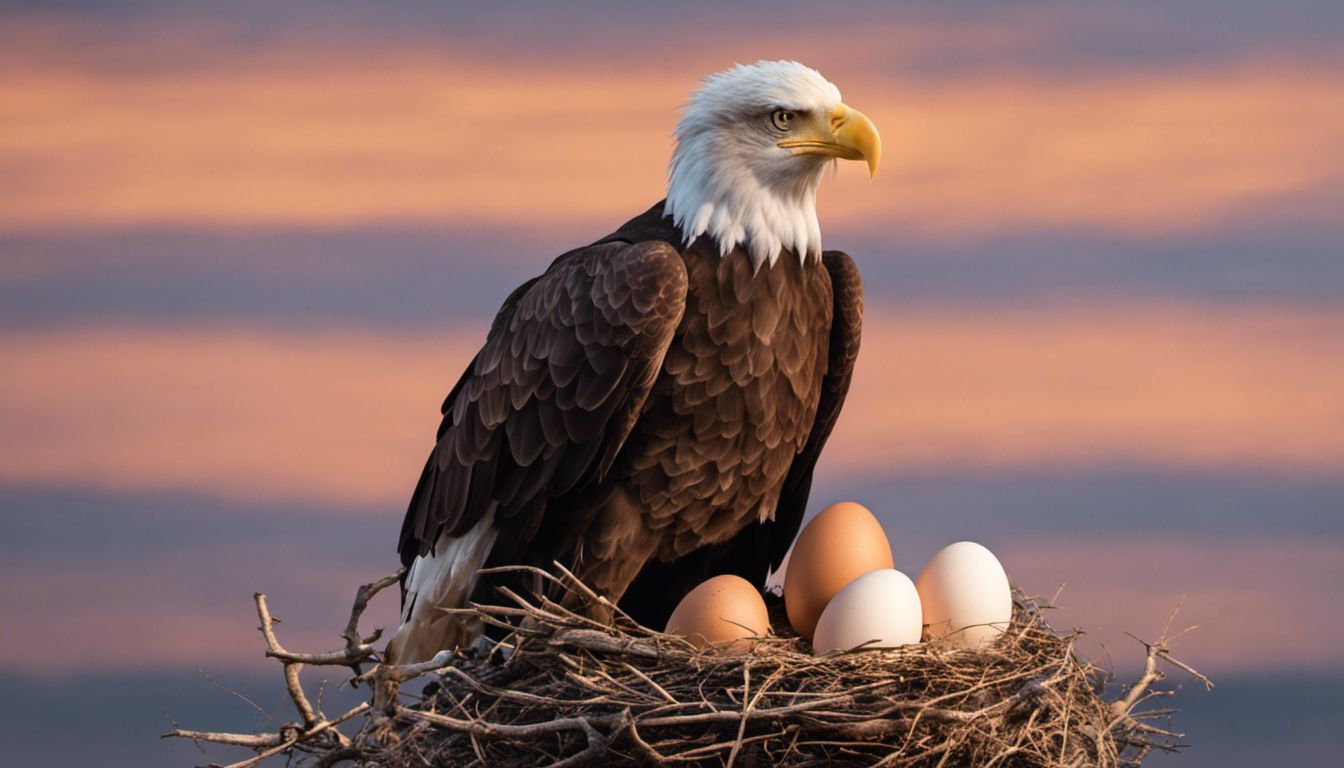Bald eagles typically lay between one to three eggs per breeding season; however, considering their reproductive lifespan, a bald eagle might lay up to 35 eggs in a lifetime. Various factors, including age, health, and environment, can influence this number.
Key takeaways about the number of eggs a bald eagle lays in its lifetime:
- Reproductive Span: Bald eagles usually breed between the ages of four and twenty, giving them numerous seasons to lay eggs.
- Clutch Size: Generally, a bald eagle lays 1 to 3 eggs each nesting cycle, which primarily occurs once a year.
- Environmental Conditions: Factors like food availability, weather, and habitat quality can impact the number of eggs laid and their survival rates.
- Conservation Status: Protection efforts for bald eagles have increased their population, potentially influencing reproductive patterns.
- Human Impact: Historical threats like DDT exposure have greatly affected bald eagles’ reproduction, showcasing human impact on their lifecycle.
- Species Resilience: Despite challenges, bald eagles have shown a robust ability to recover and maintain healthy breeding numbers.
1. Reproductive Statistics of Bald Eagles

Diving into the reproductive statistics of bald eagles gives us insight into their fascinating lifecycle. Female bald eagles are known to lay an average of 1-3 eggs per nesting season. They typically start to nest and reproduce around the age of four or five, continuing to do so until they are around twenty years old. Nesting season comes once a year for bald eagles, which means that they have one clutch annually. Given their average lifespan in the wild, this habit translates into a significant number of eggs over a female bald eagle’s lifetime.
Important points regarding the reproductive patterns of bald eagles:
- Nesting Age: Bald eagles begin nesting at approximately four to five years of age.
- Clutch Size: They lay an average of one to three eggs per nesting season.
- Frequency: One clutch per year is typical for bald eagles during the nesting season.
- Lifespan Considerations: With a lifespan that can extend beyond two decades in the wild, the total number of eggs laid can be substantial over time.
2. Factors Influencing Egg Production
When it comes to egg production in bald eagles, it’s interesting to note that their reproductive output isn’t necessarily constrained by age. Bald eagles typically initiate nesting at around five years old and, with a lifespan in the wild that can reach up to 25 years or more, the potential number of eggs laid during their reproductive years is considerable. Health is a crucial factor, and in healthy bald eagles, there hasn’t been evidence suggesting that their egg-laying rate diminishes as they get older.
Factors that can influence the egg-laying frequency in bald eagles:
- Start of Nesting: Egg production begins at about five years of age.
- Length of Reproductive Period: Considering they can live up to 25 years in the wild, the number of eggs laid during their lifetime can be substantial.
- Health and Vitality: A bald eagle’s health is a key influencer in consistent egg production each year.
- Egg-laying and Ageing: There is no clear evidence to suggest that healthy bald eagles reduce their rate of egg-laying as they age.
3. Conservation and Protection of Bald Eagles

The conservation status of bald eagles has seen a remarkable turnaround, thanks largely to concerted conservation efforts. Historically, the use of pesticides like DDT decimated their populations by causing their eggshells to thin and break. Recognizing the urgency, significant measures were taken to protect their habitats and regulate harmful substances, leading to a steady increase in numbers. Annual events such as ‘American Eagle Day’ create awareness and foster activities that help in maintaining bald eagle populations and ensuring their reproductive success.
Efforts that have contributed to the protection and conservation of bald eagles:
- Historical Threats: Pesticides such as DDT once critically endangered bald eagle populations by disrupting their reproduction.
- Legal Protections: Laws and regulations have been enacted to safeguard their habitats and ban harmful chemicals.
- Habitat Protection: Active efforts to preserve and maintain bald eagle habitats are crucial for their continued success.
- Awareness and Education: Celebrations like ‘American Eagle Day’ raise public awareness and support for bald eagle conservation.

